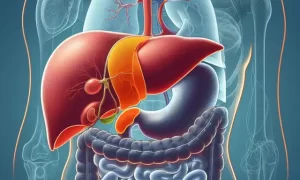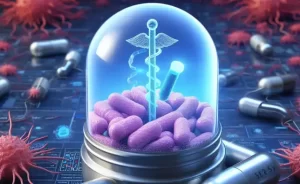What is the difference between cerebral infarction and brain atrophy?
- Normal Liver Cells Found to Promote Cancer Metastasis to the Liver
- Nearly 80% Complete Remission: Breakthrough in ADC Anti-Tumor Treatment
- Vaccination Against Common Diseases May Prevent Dementia!
- New Alzheimer’s Disease (AD) Diagnosis and Staging Criteria
- Breakthrough in Alzheimer’s Disease: New Nasal Spray Halts Cognitive Decline by Targeting Toxic Protein
- Can the Tap Water at the Paris Olympics be Drunk Directly?
What is the difference between cerebral infarction and brain atrophy?
- Should China be held legally responsible for the US’s $18 trillion COVID losses?
- CT Radiation Exposure Linked to Blood Cancer in Children and Adolescents
- Can people with high blood pressure eat peanuts?
- What is the difference between dopamine and dobutamine?
- What is the difference between Atorvastatin and Rosuvastatin?
- How long can the patient live after heart stent surgery?
What is the difference between cerebral infarction and brain atrophy? Which one is more harmful to the human body? How to prevent it?
What is the disease of brain atrophy and cerebral infarction?
Cerebral atrophy is more of a senile disease. It needs a process to occur and develop, and it is gradually aggravated.
However, the age of onset of cerebral infarction is getting younger and younger, often sudden onset, and even sudden death.
What is the disease of brain atrophy and cerebral infarction?
1. Brain atrophy
It refers to a phenomenon in which the brain tissue itself has atrophy due to qualitative lesions caused by various reasons.
Pathologically, the brain tissue is reduced in size, the number of cells is reduced, and the ventricles and subarachnoid space are enlarged.
This disease mostly occurs over 50 years of age, and the course of the disease can reach several years to several decades.
There are more men than women. It is named after the CT examination revealed that the volume of brain tissue was reduced and the ventricles were enlarged.
2. Cerebral infarction
It is an ischemic stroke, or ischemic stroke. Simply put, it is a series of syndromes caused by the necrosis of brain cells after the cerebrovascular blockage. It accounts for about 70% of strokes, and the ratio of men to women is equal.
What are the causes of brain atrophy and cerebral infarction?
1. Reasons for brain atrophy
One of the main reasons is advanced age, as the age increases, the risk of brain atrophy will increase.
In addition to age, brain trauma, neurological diseases, infections and other reasons cause abnormal reduction of brain cells, which can also cause brain tissue to shrink.
Genetics, long-term alcoholism, cerebrovascular accidents, vascular malformations, and frequent seizures can also increase the risk of brain atrophy.
Hypertension, hyperlipidemia, diabetes, coronary heart disease, infection, reduced immunity, smoking and alcoholism may all induce brain atrophy.
2. Causes of cerebral infarction
The main cause of cerebral infarction is atherosclerosis. For example, severe atherosclerosis of the carotid arteries leads to plaque, which ruptures and forms thrombus.
The second reason is cardiogenic thrombosis, which is mainly caused by thrombus shedding caused by atrial fibrillation or atrial flutter, leading to cerebral infarction; it may also be cerebral infarction caused by thrombus shedding caused by other heart diseases.
The third reason is that cerebral infarction is caused by occlusion of arterioles, hyaline change and so on.
These causes are all related to high blood pressure, hyperlipidemia, diabetes, genetics, smoking and alcoholism, obesity, unhealthy diet, inactivity, staying up late, mental stress and other factors.
Moyamoya disease is also a high-risk factor for cerebral infarction.
Possible manifestations of brain atrophy and cerebral infarction?
1. Performance of brain atrophy?
There may be no manifestation of early brain atrophy, and memory loss, slow response, and cognitive decline may occur gradually.
As brain atrophy worsens, there may be forgetfulness, loss of work, slow movement, severe forgetfulness, confusion, unstable walking, inability to dress on their own, inability to take the initiative to eat, incontinence, ignorance of family members, delusions, hallucinations, etc.,
intelligence With full physical paralysis, she can’t take care of herself at all and needs special care.
2. The performance of cerebral infarction?
Mild or special cerebral infarction in the infarct site can also have no obvious manifestations, or manifestations in the initial stage, without sequelae; but many cerebral infarctions have many symptoms during an acute attack, and these symptoms will continue, and some people will remain forever.
The most typical manifestations are skewed mouth and eyes, aphasia, hemiplegia, hemiplegia; there may also be inability to hold things, the strength of the hands is significantly lower or asymmetry than before; dizziness, headache, numbness of the limbs, numbness on one side of the face or hands and feet, Some have tongue numbness, lip numbness, or numbness on one side of the upper and lower limbs; sudden weakness or inflexibility on one side of the limb, stopping sometimes, walking skewedly, and walking unsteadily; 5. Unclear words, unanswered questions 6. Loss of consciousness, mental retardation; drowsiness, that is, drowsiness throughout the day; sudden blindness for a while; nausea, vomiting or hiccups; facial paralysis and tongue paralysis, hemianopia, drinking water, choking, and difficulty swallowing.
The most serious ones can also lead to short-term death or even sudden death.
Treatment of brain atrophy and cerebral infarction
1. Brain atrophy
There is currently no effective method for brain atrophy, especially for physiological brain atrophy, that is, the brain atrophy caused by aging and old age, there is no effective method. For brain atrophy caused by disease, the primary disease is treated first.
2. Cerebral infarction
Acute cerebral infarction requires the fastest opening of blood vessels, which can be treated with thrombolysis, thrombus removal, stents, etc.; later, lifelong medication and a healthy lifestyle are required. Arteriosclerosis causes long-term use of aspirin and statins, as well as the control of three highs; arrhythmia and atrial fibrillation cause long-term anticoagulation therapy.
The impact of brain atrophy and cerebral infarction on life span
1. Brain atrophy
Brain atrophy itself does not have a serious impact on life expectancy, but as the brain atrophy worsens, various complications such as blood clots, infections, and fractures will occur, which can lead to organ failure. These complications can be life-threatening.
2. Cerebral infarction
Severe cerebral infarction will directly lead to death, about 5-15% of deaths; general cerebral infarction may have sequelae, if cerebral infarction is accompanied by sequelae, about 50% will have sequelae. If there are no sequelae and formal control, then there is no direct impact on life expectancy.
How to prevent brain atrophy and cerebral infarction?
1. Prevention of brain atrophy
Healthy life, prevention of three highs, prevention of cerebrovascular diseases. Adhering to exercise, regular work and rest, healthy eating, staying away from tobacco and alcohol, etc. are all conducive to preventing brain atrophy. Of course this is only one aspect, because brain atrophy is also related to age.
2. Prevention of cerebral infarction
The main cause of cerebral infarction is atherosclerosis and arrhythmia. Therefore, it is necessary to live a healthy life to prevent the worsening of atherosclerosis, such as quitting smoking and drinking, exercising, weight control, low-salt, low-oil and low-sugar diet, reducing staying up late, reducing stress, and monitoring blood pressure Blood sugar and lipids, control three highs and so on. Found that atrial fibrillation requires regular anticoagulation therapy.
In general, there is a process of brain atrophy that occurs and develops relatively slowly. As time goes by, it becomes more and more serious with age.
Cerebral infarction, because of the different locations and fates of the infarction, 5-15% of patients with cerebral infarction will die in the acute stage; 50% of them will have sequelae; some are lucky, or go to the doctor early, regular treatment is not Will affect life span.
(source:internet, reference only)
Disclaimer of medicaltrend.org



